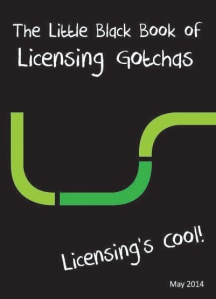An Overview
Microsoft offer two exams in Microsoft licensing at Microsoft Certified Professional level: the obliquely named 70-671 and 70-672 exams. They’re primarily aimed at Microsoft partners who sell the software, but actually look good on the CV or résumé of anyone who works in Microsoft licensing. Both of the exams test you on your knowledge of the Microsoft products and their licensing models, and then the 70-671 exam focuses in on the Microsoft licensing programs aimed at small and medium businesses (Open and Open Value) while the 70-672 exam concentrates on those aimed at large organisations – so Select Plus and Enterprise Agreements.
The exams are localised and available all over the world and thousands of people have the certification – both because it’s recognised worldwide as a benchmark in licensing knowledge, but also because it’s required at several levels in the Microsoft Partner Program for partners in the Volume Licensing and SAM Competencies.
It’s worth knowing that the exams were launched in 2009 and although they’ve been updated a little since then, you do need to focus on being familiar with the licensing details of slightly older versions of the key products: so Windows 7, Windows Server 2008 R2, SQL Server 2008 R2, and the 2010 versions of the System Center products, for example.
Some Resources
We’ve got some nice resources available if you’re studying for these exams. The first is a series of tests which offer sample exam questions, and you should use these to get a feel for the types of questions that are in the exams, as well as to check that your knowledge is complete. These tests are free for you to take as many times as you like as you prepare for your exam and you can find a separate test for each of the key areas of the exams here: www.licensingschool.co.uk/70-671 or www.licensingschool.co.uk/70-672.
If you’re currently working on learning the topics required for the exams then I’d recommend some training resources. Over the years I’ve trained lots of people to pass these exams, and it made sense to put everything people need to know in one place. So, I wrote a book for each exam. For each topic there’s an explanation with some nice graphics, some tips on applying your knowledge in the exam, and then some recap questions. At the end of each book there are sample scenarios so you can check you’re thinking the right way for the exams. You just need to search for “Lessons in Licensing” on your local Amazon site to find the Kindle versions, or if you prefer hard copies, then you can order those here: www.licensingschool.co.uk/shop.
Many people have had success in passing their exams with these resources (check out the lovely Amazon reviews!) and if you’re studying for these exams I wish you the best of luck!

